
By Ian Cushway
03rd August 2018
|
Triumph Spitfire Buying Guide
Here’s how to secure the best example of this long-lived & much loved British classic.
Being able to grab the chassis, engine, and running gear from its Herald, along with the design prowess of its stylist, Michelotti, Triumph had a head start getting its small sports car to market in 1962. The rest, as they say, is history but suffice to say the Spitfire has become one of the most cherished open-top two-seaters out there with owners relishing its lovely looks, fun drive, cheap running costs and easy maintenance. Oh, and you can add affordability to the list. And this is precisely why you will want to buy one!
So what is it?
The first one, the Spitfire 4, featured a 1147cc four-cylinder engine, disc front brakes and winding windows. Performance was roughly on par with its closest rival, the MG Midget, though better leg room and easier engine accessibility gave it a slight advantage. The MkII came along in 1965 and sported a new grille, a better interior and a few more horses thanks to a new camshaft and more efficient tubular manifold. Following more stringent US safety legislation, it gained revised bumpers and a new 75bhp 1296cc engine to become the MkIII in 1967. The increase in power subsequently prompted the development of the MkIV in 1970 which received a significant Michelotti makeover which rid the car of its wide grille but gained subtly flared arches, a revised windscreen height and a Triumph family tail end design. From 1973, the MkIV also received reclining seats, the plastic dash was replaced by wood, and driveshaft length was increased to give negative camber at the rear wheels.
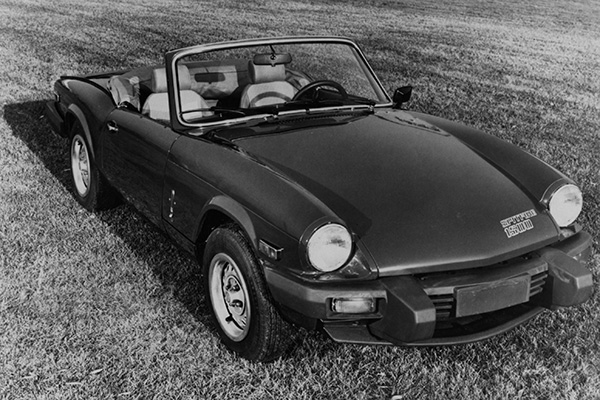
Credit: Image source - Moss Europe Ltd.
Last of the line
Of course all this added weight, and with its denuded 63bhp engine feeling increasingly flaccid, something had to be done about performance. Enter the final Spitfire, the 1500, in 1974. Really just a stroked 1.3, power (71bhp) was actually down a little on the earlier Spitfire although its longer stroke gave the car more torque and better cruising ability. The swansong Spitfire also received new seats and trim with the majority of switchgear getting a revamp at the same time with TR7 bits making an appearance instead of the original Herald items.
Alas, the 1500 soldiered on until 1980, by which point ever more stringent US emissions regulations finally sounded the death knell for the last of the separate chassis sporty Triumphs. Total production amounted to 314,161 cars.
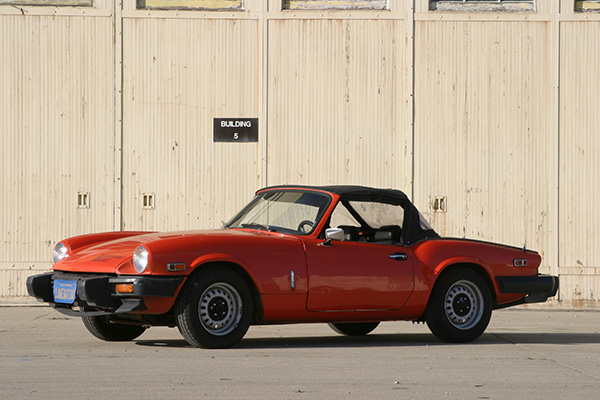
Credit: Image source - Moss Europe Ltd.
Body beautiful?
Adorable as it is, sadly the chassis and body of this pretty two-seater is a haven for rust. While it borrows the Herald chassis, it does away with the saloon’s side members, thus making the Spitfire’s rust-prone sills structural. Expect the worst if you can’t shut the doors without lifting them.
Door bottoms, boot floor, windscreen frames, wheel arches, valances and A-posts are all susceptible to rot.
Wiggle the doors on their hinges as excessive movement could be due to A-pillar rot which is tricky to sort properly. While you are at it, eyeball the bottoms of the doors which can also rot out, as well the front edge of the bonnet and the lower front wing sections.
Lift the carpets inside if you can and check the floorpans, particularly around the pedal area, as well as the condition of the metal behind the rear seats. From here you’ll also be able to check one of the most often overlooked rot spots –the front mounting point of the rear leaf springs.
Bare in mind that while MkI-III Spitfires had a separate and relatively easy to repair windscreen frame, on the MkIV and 1500 it was built into the bulkhead making restoration more tricky.
If you’re looking for a project, don’t be put off because all the necessary Spitfire panels are still available here.
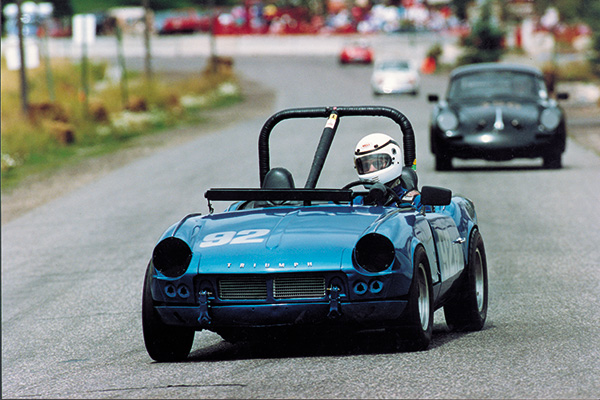
Credit: Image source - Moss Europe Ltd.
Now we’re torquing
There’s basically the same engine in whatever of the five models you choose – and it’s a straightforward affair that’s unlikely to hide too many horrors. In truth, most engines will have had a rebuild by now so it’s a case of finding out what was done, when and by whom. Excessive valve gear rattle will mean a top end rebuild, which is no biggie, but big end noise isn’t good, nor is play in the crankshaft. You can check for the latter by tugging on the front pulley. If there’s excessive movement, it will be the thrust washers which, if they break up and fall out will wreck the engine.
Blue smoke on the overrun points to worn valve guides, but if it’s while accelerating, suspect the cylinder bores and pistons. If you need to do a rebuild, you’re looking at £1,000.
The 1500 can also suffer poor idling in heavy traffic, particularly when warm. This is due to faulty Waxstat jets in the SU carb, which can be converted to traditional jets if you so wish.
Cooling on the 1500, due to its ineffective original radiator, can also be an issue so, if it hasn’t been upgraded already, keep a beady eye on the temperature gauge while out on a test drive. If fitted, check the overdrive works – if it fails to engage it could be a simple wiring issue, although a low oil level could be more difficult to remedy.
Inside job
If you find a solid car with a reasonably healthy engine, don’t fret too much about the interior because it’s all pretty basic and replacement bits from seat covers to headlining and carpet sets are readily available here. You can even get hold of parts for the hood frame, and for reference, if the hood itself is looking past its best, vinyl ones start at £273.
So what else is there?
You’ll get a good idea about the Spitfire’s running gear while out on a test drive. Knocks from the front suspension could either be the vertical links, worn nylon bushes in trunnions or bust anti-roll bar links. They’re all easily (and cheaply) sortable. Less so are the rear wheel bearings, as you’ll need a press to get them out, so if you hear a whirring sound negotiate accordingly.
As for the brakes, exhaust components and other mechanical parts, again, the joy with this car is that everything is available for very little money and you will be able to do all the work on your driveway.
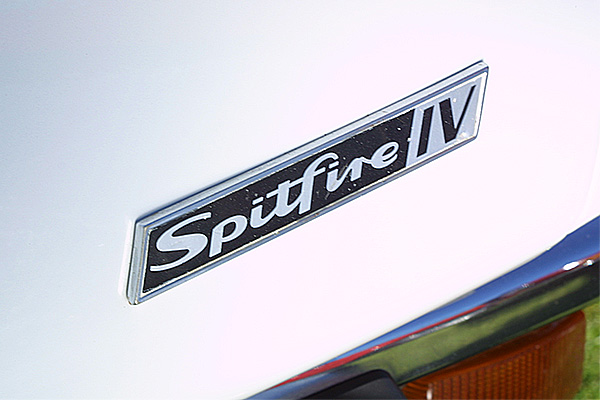
Credit: Image source - Moss Europe Ltd.
Best model?
That’s a tough one, because they’ve all got their different qualities. Because the Spitfire enjoyed three decades of evolution there’s a car in the range to suit all tastes from the early more classic examples to those that looked a lot more modern with their higher bumpers and ‘Triumph family’ rumps. Let’s just say if you want one to use every day, pick a later 1500. If you’re looking for real classic appeal, then a ‘60s car will be more appropriate. At the end of the day, you’ll know when the right car comes along.
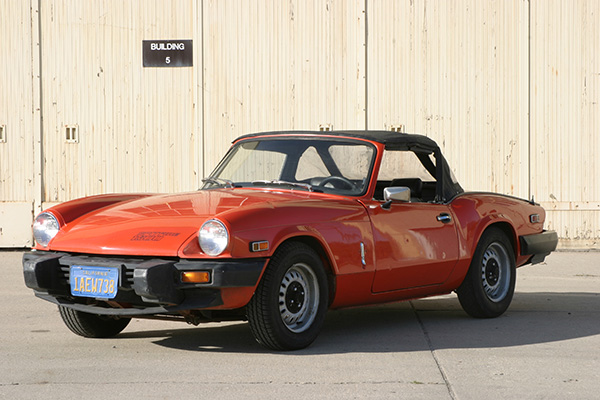
Credit: Image source - Moss Europe Ltd.
How much?
Unsurprisingly, the MkIV is the most affordable; nice examples usually make between £4,000-£5,000. Less than perfect cars but with promise and a valid MoT can be had for £3,000. A basket case might be as little as a grand.
Early Sixties examples are now quite rare and command a premium, so you will pay in the region of £15,000-£18,000 for a really nicely restored MkI or II. A solid MkIII will be just under this at between £9,000-£12,000.
Expect to pay £4,000-£6,000 for the more civilised Spitfire 1500, with runners fetching half that. That said, we’ve seen low mileage, original cars advertised for as much as £8,000.
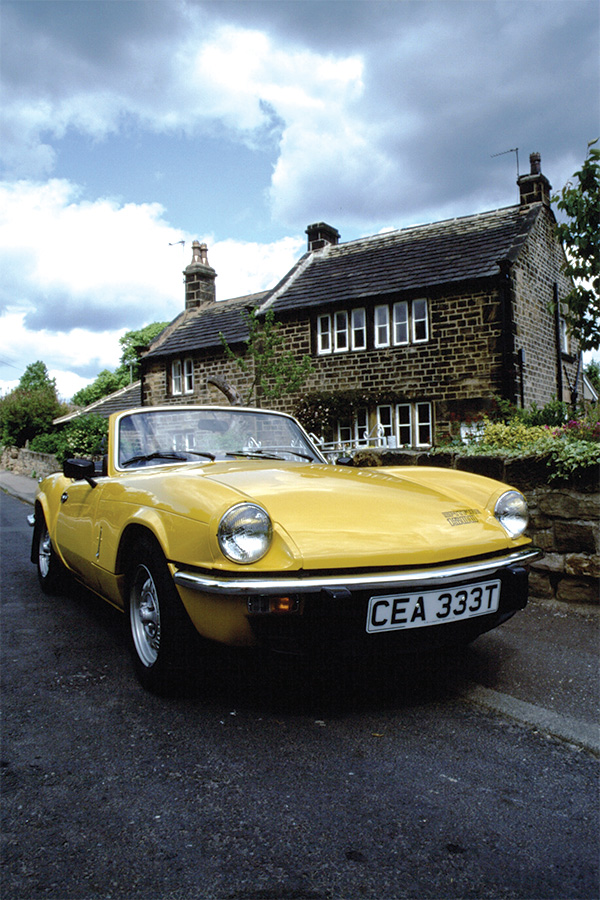
Credit: Image source - Moss Europe Ltd.

Keep up with all the latest from Moss Europe on our social pages
|
|










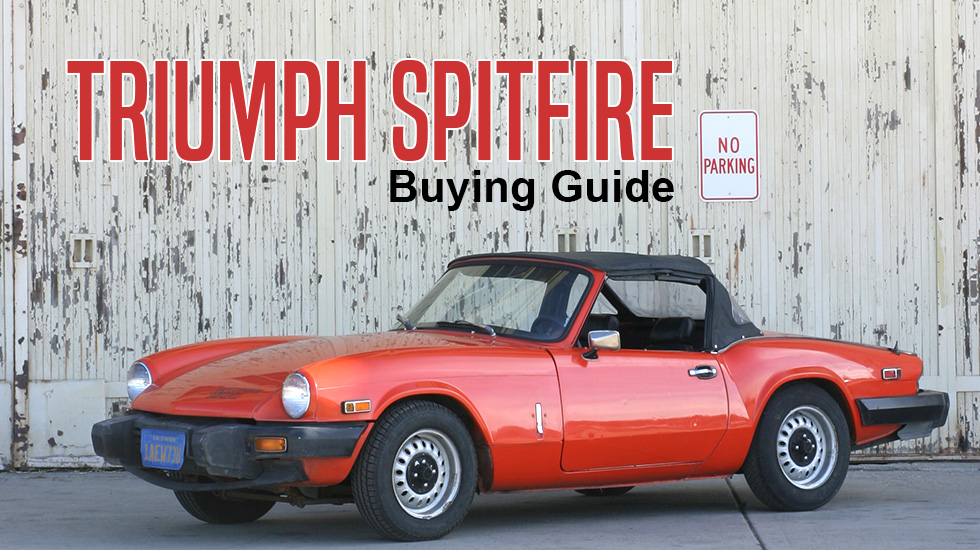



